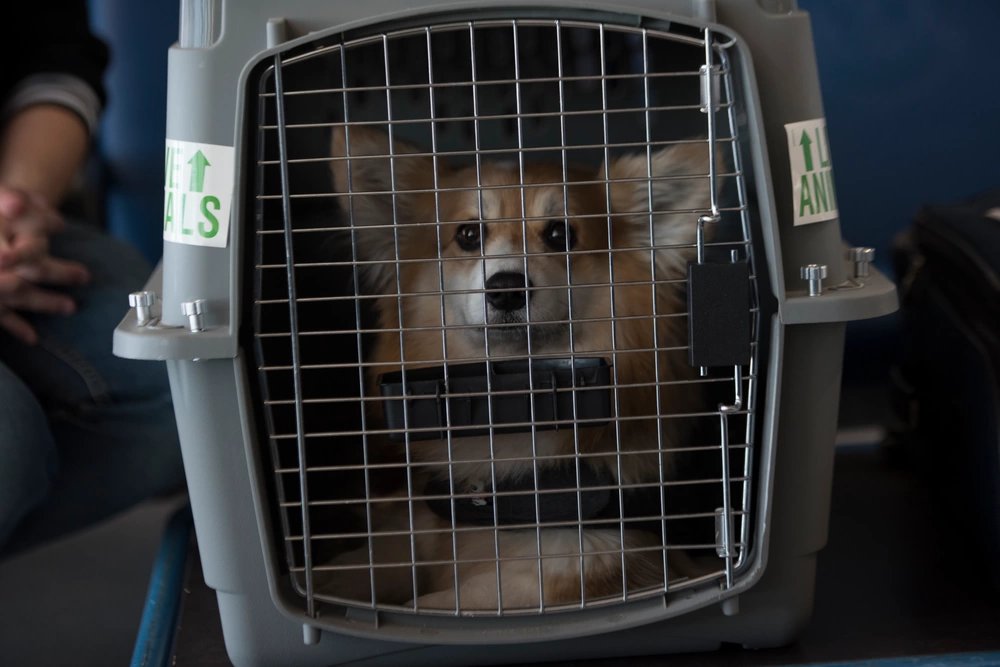PCSing with pets adds layers of complexity that only milspouses truly understand. Health certificates are non-negotiable, especially for OCONUS moves. You’ll need a current certificate from your vet, usually within ten days of departure. Some countries demand extra vaccinations or quarantine periods, so getting ahead of the game is crucial.
We once had a PCS to Turkey, where my cat’s authorization to fly came through just the day of my flight. My spouse had already gone ahead for early reporting, and all I could think was what would happen if the authorization didn’t come through in time? It was a nail-biter, constantly checking for updates and stressing over the timeline. Keeping both paper and digital copies of all pet documents saved the day. You never know when someone will ask for that one piece of paper at the worst possible moment.
Microchipping is typically required for OCONUS moves, and some vaccinations must be administered well in advance. Always check with your base’s veterinary clinic or the USDA pet travel website to know exactly what’s needed for your destination.
Pet-Friendly Travel
Not all airlines handle pet travel the same way. If you’re flying to your new duty station, make sure the airline allows pets and understands its specific rules. The Patriot Express can be an adventure in itself. My cat used to get so anxious amid the noise and chaos that he would have accidents in his carrier every time we flew. Eventually, I found a medication that calmed him without knocking him out, making those long flights much more bearable.
Book your pet’s spot as soon as possible. Airlines have limited pet slots, especially during peak PCS season. Ensure your crate meets airline standards and get your pet comfortable with it before the trip. A familiar environment can reduce their stress during travel.
Finding Pet-Friendly Lodging
Securing a place to stay that welcomes pets can be a real challenge during a PCS move. Before hitting the road, research pet-friendly hotels along your route. Military installations often have pet-friendly lodging, but these spots fill up fast. Call ahead and book as soon as you have orders to avoid last-minute scrambles.
Off-base options might require extra digging, especially for OCONUS moves. Websites like BringFidoand PetsWelcome can help locate hotels that accept pets. Double-check temporary housing rules at your destination since some countries have strict guidelines that could impact your plans.
Prepping for the Journey
Traveling with a pet, whether by plane or car, is all about keeping them comfortable and safe. For air travel, acclimating your pet to its crate is essential. Practice sessions with treats and familiar bedding can make a big difference when the actual travel day arrives. If you’re taking your pet in-cabin, consider a warming pad inside their crate. Those airplane floors can get chilly!
On road trips, plan for regular pit stops. Pack portable water bowls, extra food, and their favorite toys or blankets to help reduce anxiety. For flights, label the crate with your pet’s name, your contact information, and your destination address. It’s a small step that provides peace of mind.
Navigating Housing Rules
Not all base housing allows pets, and each installation has its own set of rules regarding types and numbers of pets. Some privatized housing restricts certain breeds or limits how many animals you can have. Knowing these rules ahead of time helps in planning your next steps.
If on-base housing isn’t accommodating, off-base options often offer more flexibility with pet policies. However, it’s important to verify any restrictions or additional costs associated with having pets in rental properties.
Tackling OCONUS Moves with Pets
Moving overseas with pets adds another layer of complexity, but it’s manageable with early preparation. Beyond health certificates and vaccinations, some countries require pet import permits, which can take months to process.
Waiting for my cat’s import authorization during our PCS to Turkey was a stressful experience. It taught me the importance of keeping meticulous records and staying on top of all paperwork. Some countries mandate quarantine periods, while others allow pets to quarantine at home if all entry requirements are met. Always consult your base’s veterinary clinic for the most up-to-date guidance on your destination.
Lean on Your Network
You’re not alone in this journey. Other military spouses can be invaluable resources for advice and support. Online communities and PCS forums offer tips on everything from finding pet-friendly accommodations to navigating complex paperwork. If your PCS timeline is tight, consider services that specialize in pet relocation to handle logistics and ensure your pet arrives safely.
Embrace Flexibility
Moving with pets requires patience, planning, and a healthy dose of flexibility. Whether dealing with last-minute authorizations or calming an anxious pet during travel, a little preparation goes a long way. Keep your documents organized, stay informed about travel requirements, and don’t hesitate to reach out for support. With some extra effort, you can make the move smoother for everyone, including your four-legged family members.


